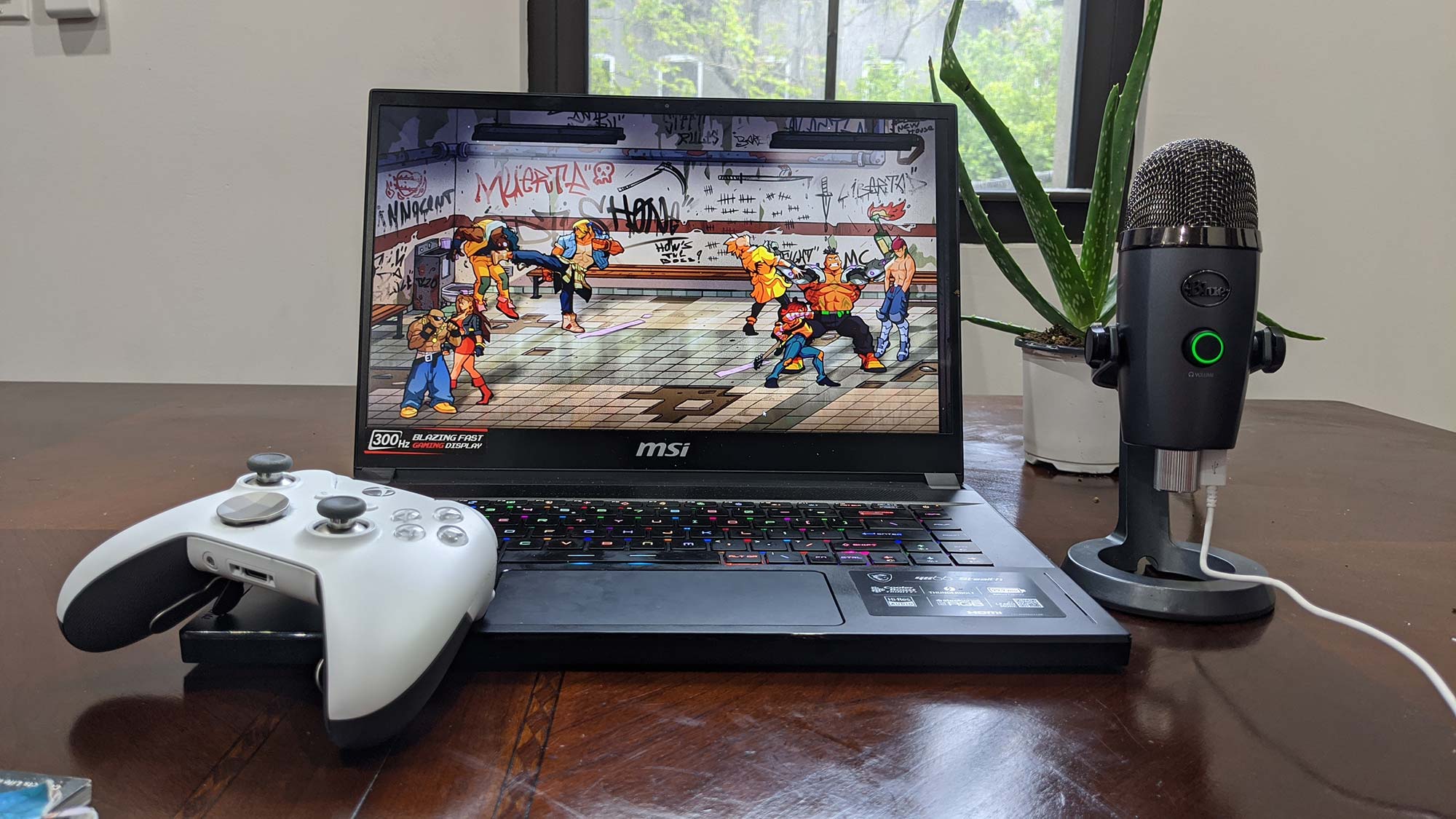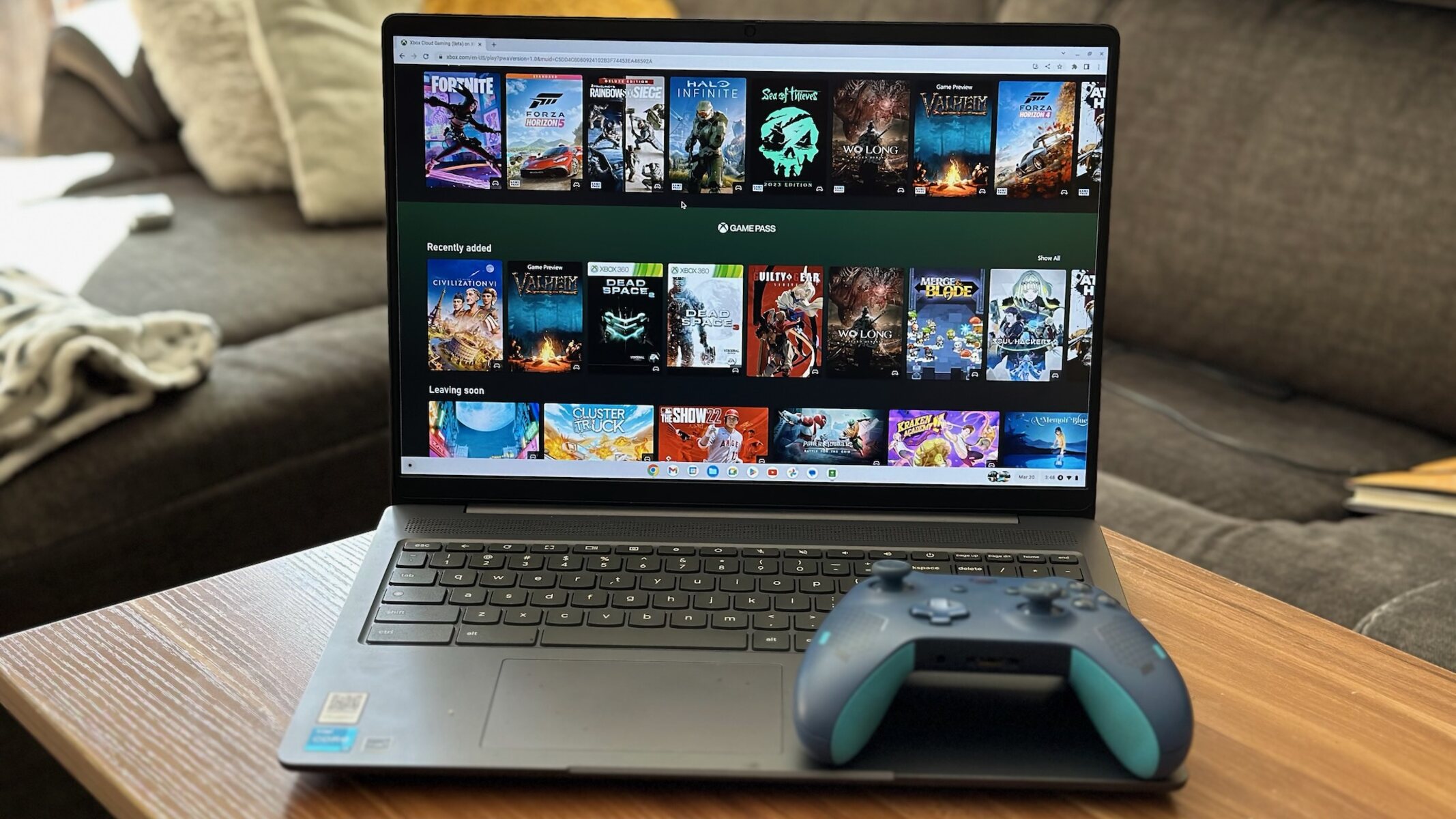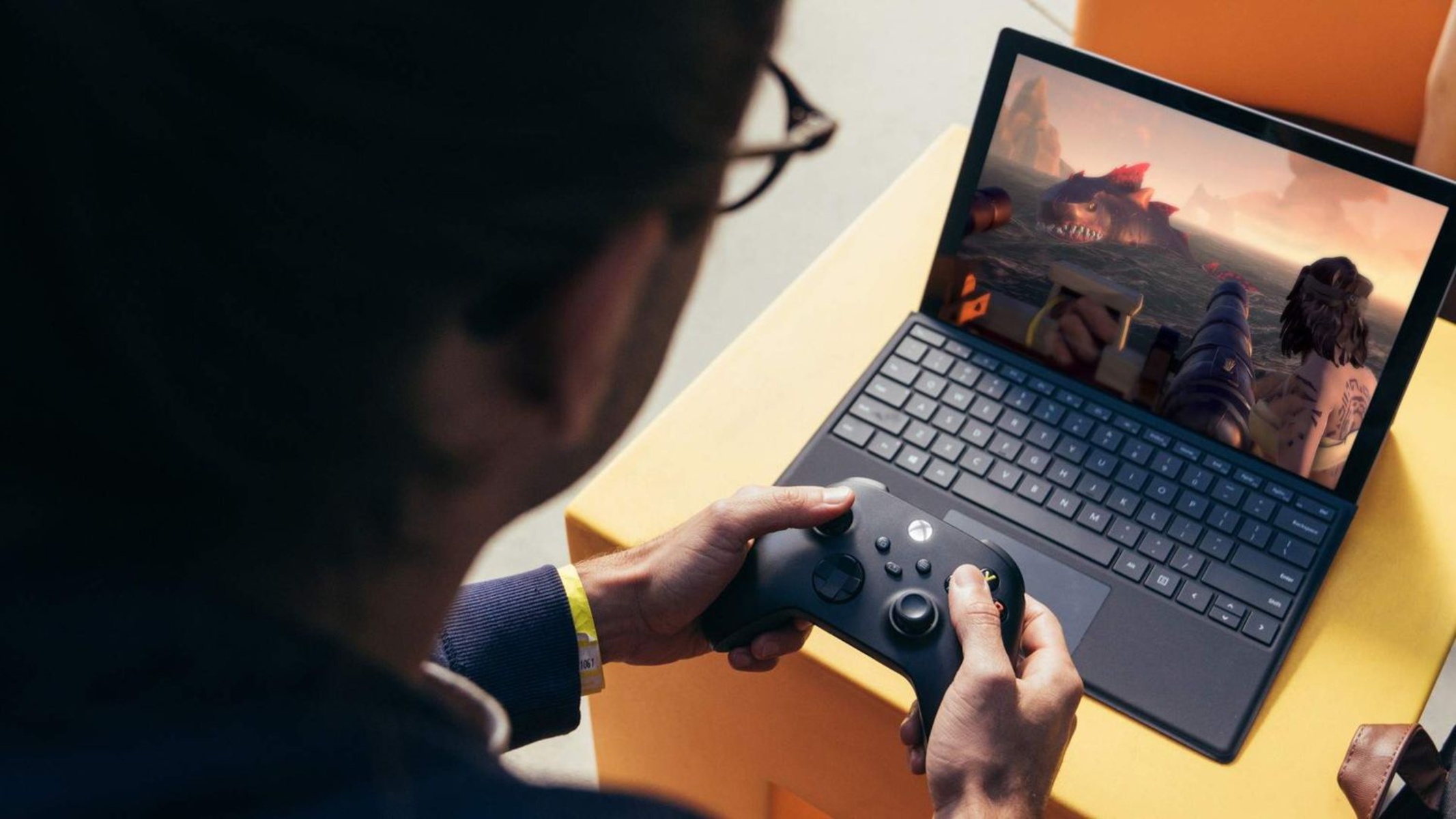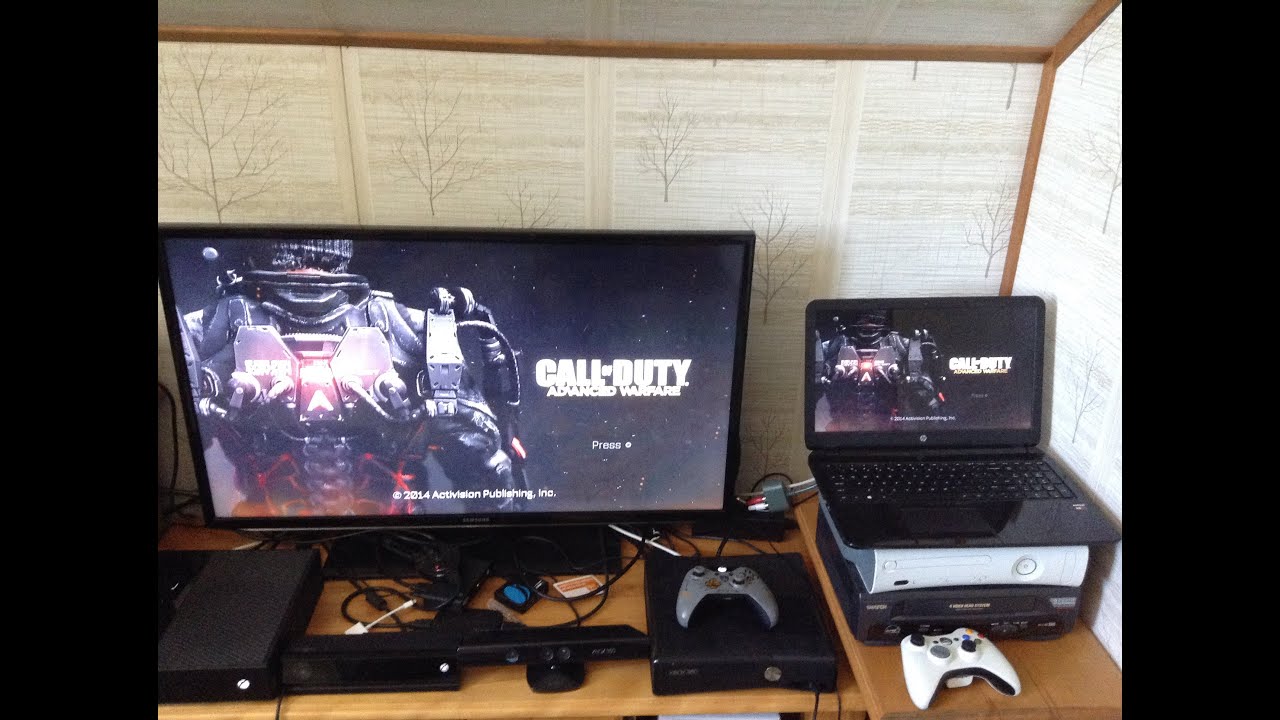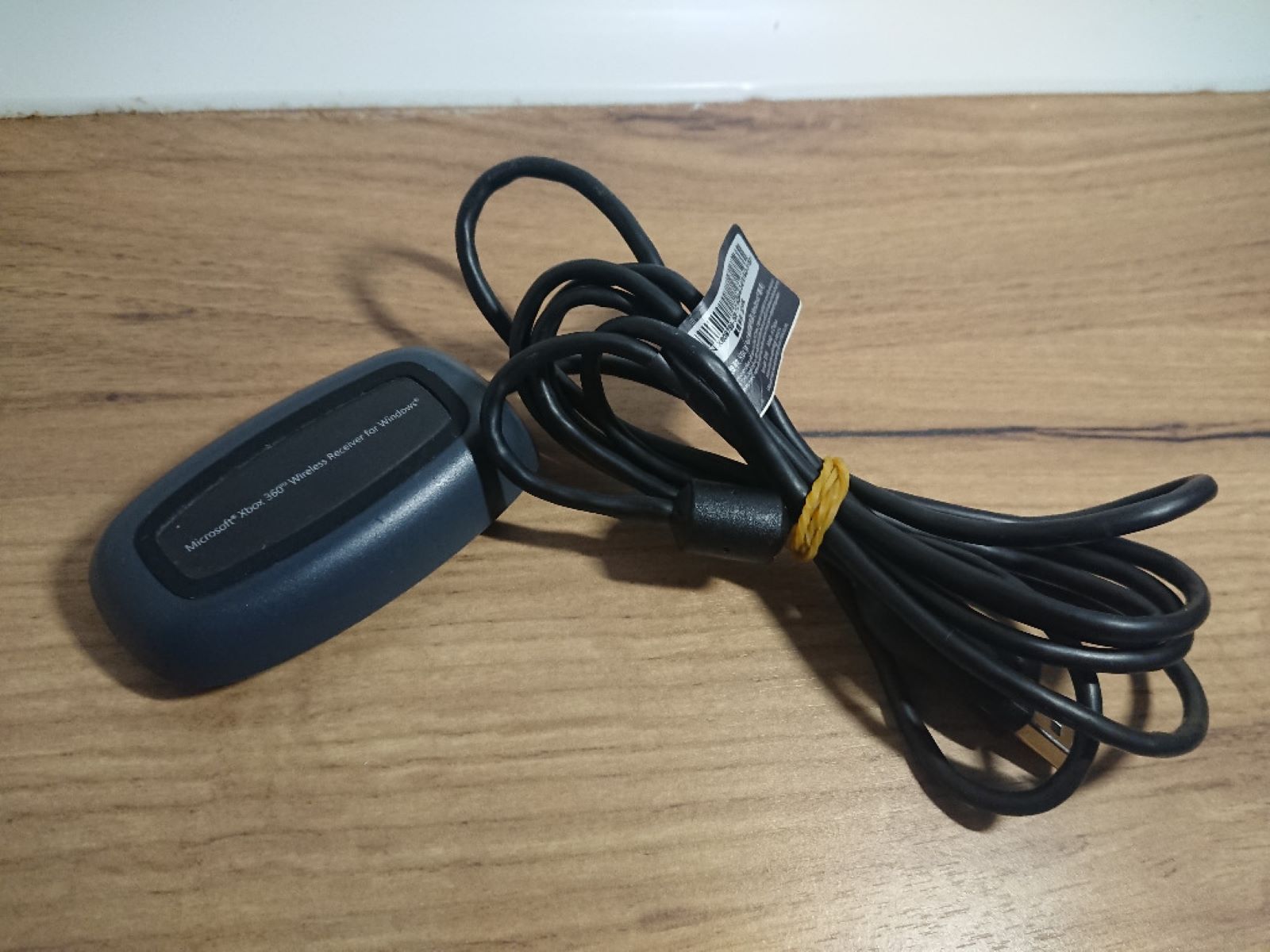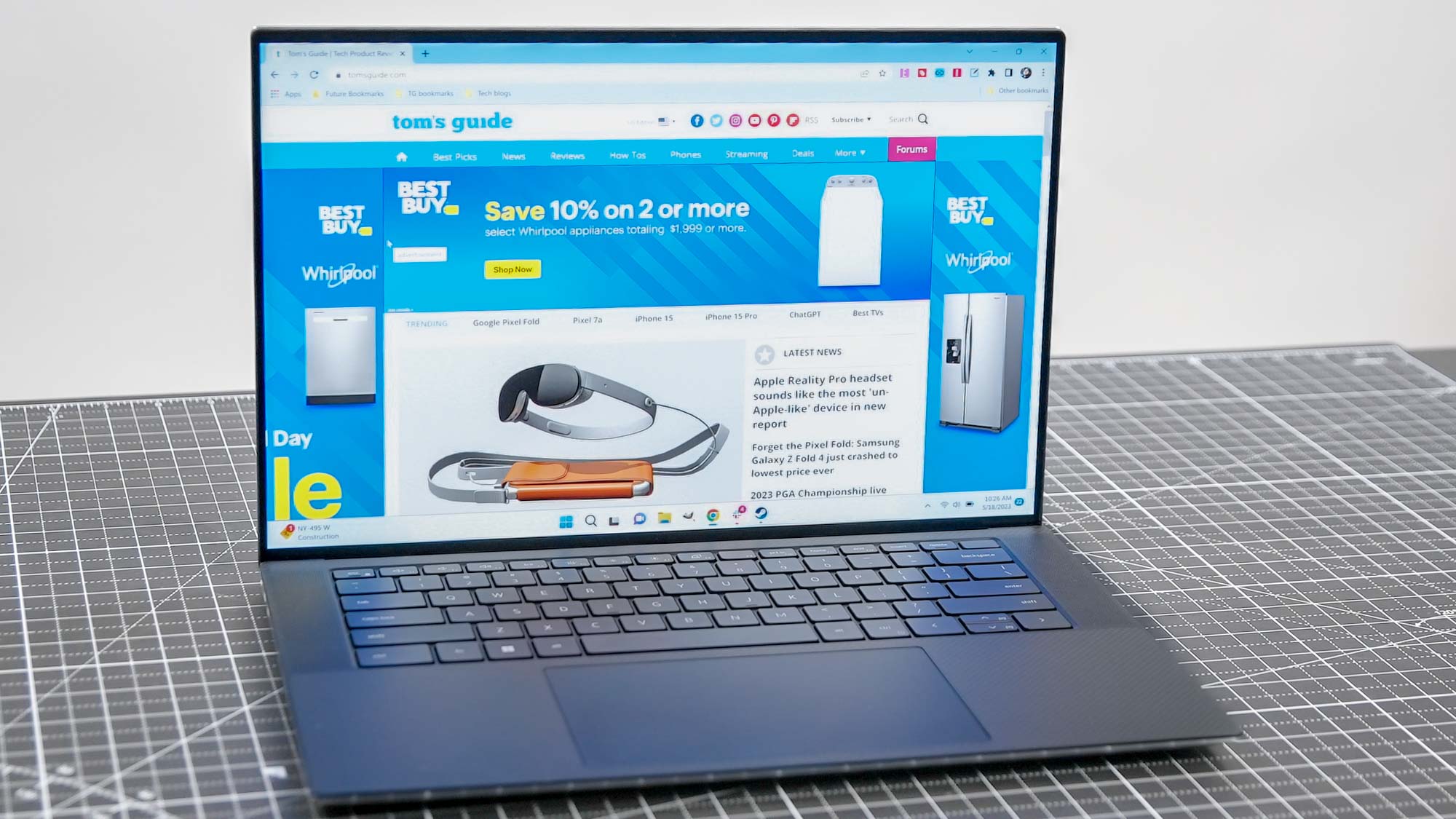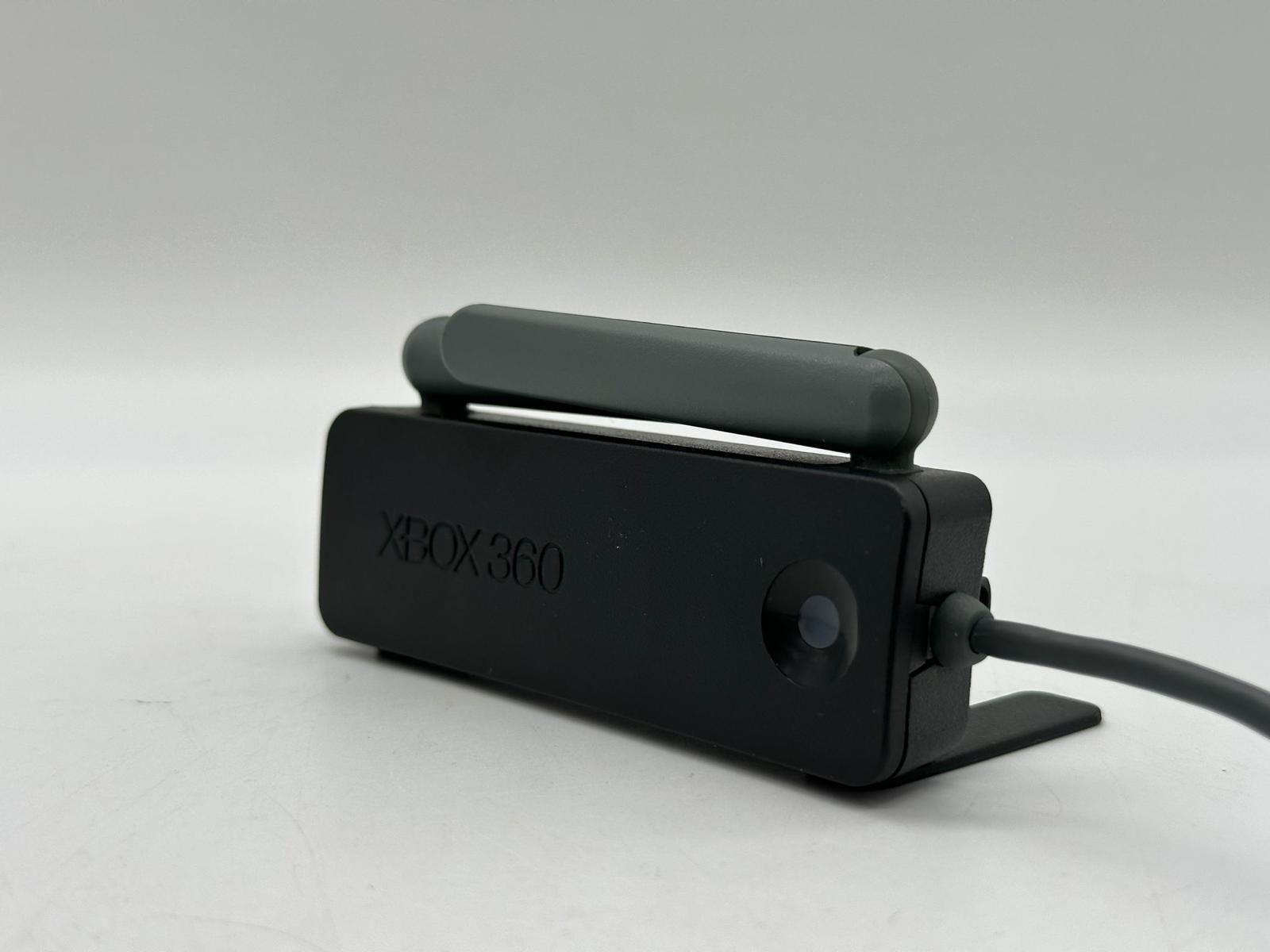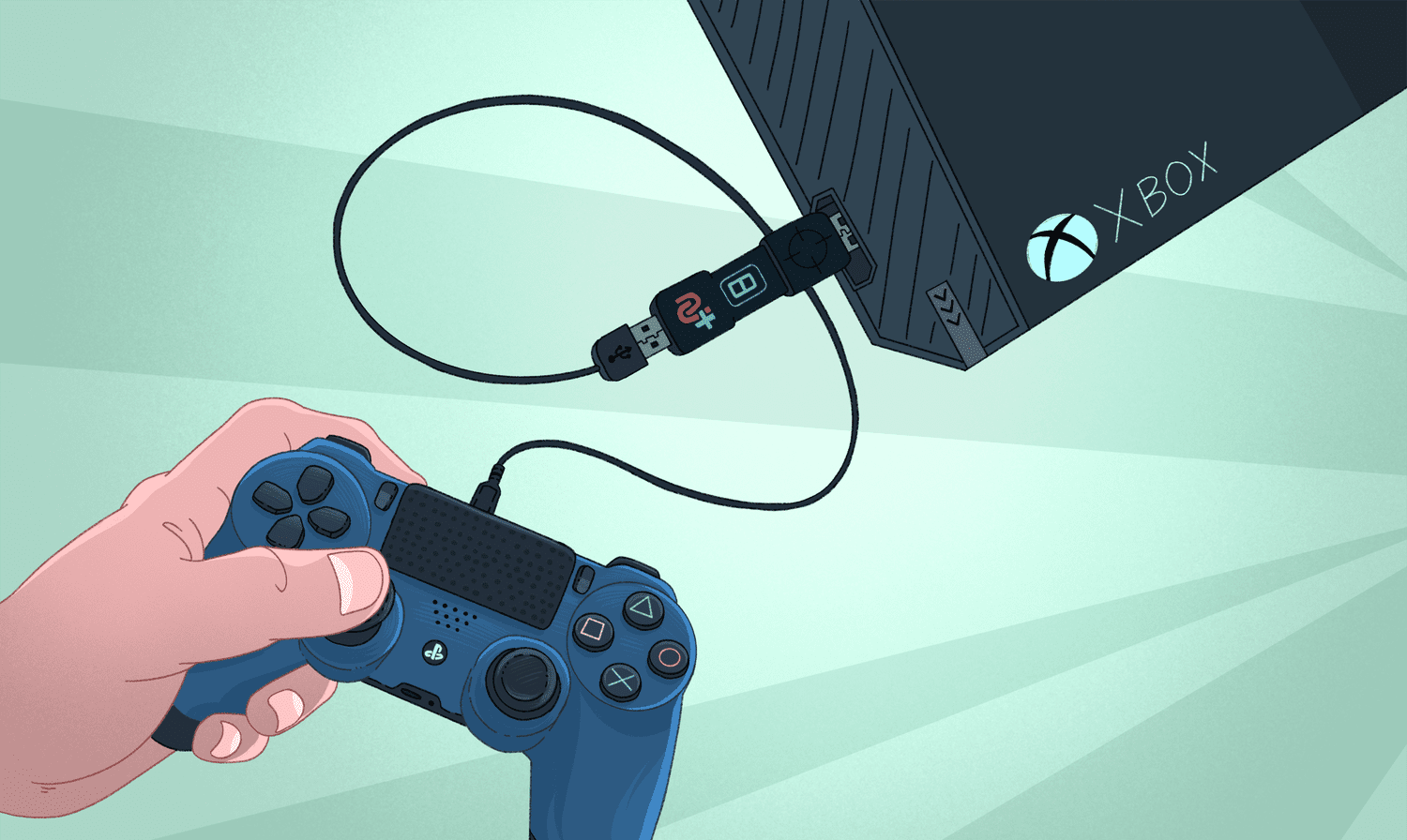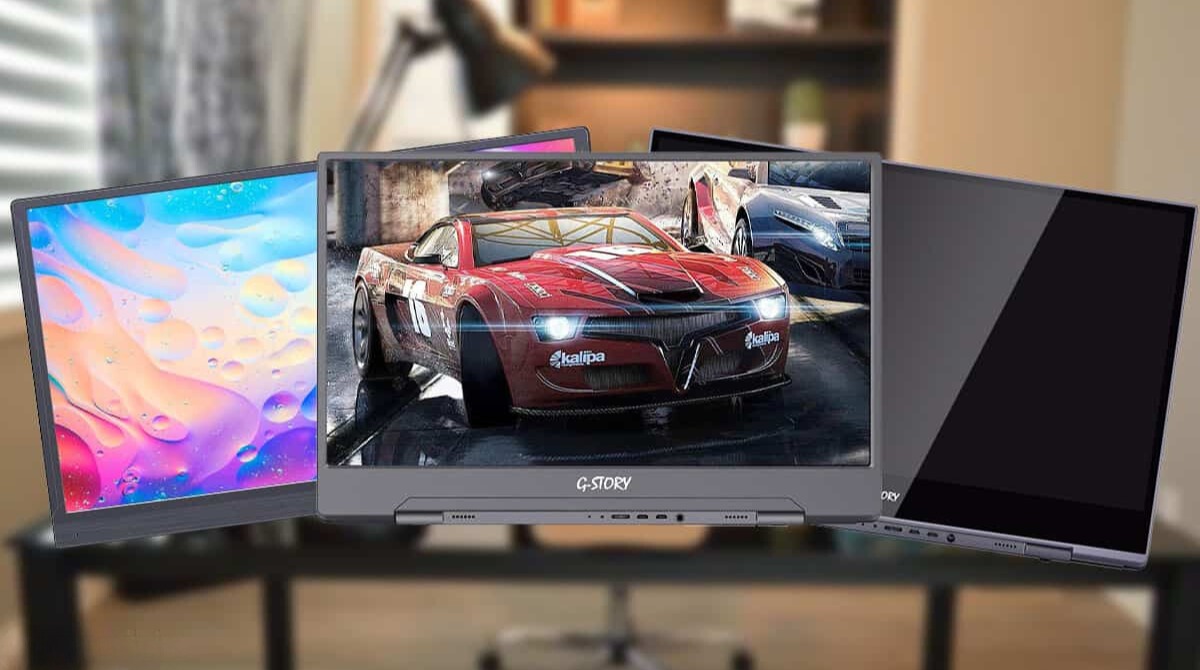Introduction
Gaming laptops have become increasingly popular among gamers due to their high-performance capabilities and portability. However, some gamers prefer the familiarity and comfort of using an Xbox controller to play their favorite games on laptops. The good news is that connecting an Xbox controller to a gaming laptop is a relatively straightforward process.
In this guide, we will walk you through the steps to connect an Xbox controller to your gaming laptop. Whether you want to play racing games, first-person shooters, or sports games, having a controller can greatly enhance your gaming experience. We’ll cover various methods, including connecting via a USB cable or Bluetooth, as well as troubleshooting tips to help you overcome any potential challenges you may encounter along the way.
Before we dive into the steps, it’s essential to note that the Xbox controller is compatible with most gaming laptops. However, you should check your laptop’s specifications to ensure it has the necessary ports or Bluetooth capabilities to connect the controller. Once you’ve confirmed compatibility, you can proceed to the next steps.
Check for Compatibility
Before attempting to connect your Xbox controller to your gaming laptop, it’s crucial to ensure that your laptop is compatible with the controller. There are two main aspects to consider: the type of connector required and the availability of Bluetooth connectivity.
Firstly, check if your gaming laptop has a USB port or a USB Type-C port. Most Xbox controllers come with a USB cable for a wired connection, so having a USB port on your laptop is essential. If your laptop only has USB Type-C ports, you may need to use a USB Type-C to USB adapter or purchase a controller that supports USB Type-C directly.
Secondly, determine if your gaming laptop has built-in Bluetooth capabilities. Bluetooth allows you to connect the Xbox controller wirelessly, providing more freedom of movement during gameplay. Refer to your laptop’s specifications or look for the Bluetooth symbol in the system tray or settings to verify its presence.
If your gaming laptop meets the necessary requirements for both USB connection and Bluetooth, you have the flexibility to choose either method based on your preference and convenience. However, if your laptop lacks USB ports or Bluetooth functionality, you may need to explore alternative solutions, such as using a USB hub or purchasing a Bluetooth adapter.
It’s worth noting that different generations of Xbox controllers may have different compatibility. The Xbox One and Xbox Series X/S controllers are generally more widely compatible with gaming laptops compared to the earlier Xbox 360 controllers. Ensure that you have the appropriate controller model to maximize compatibility and functionality.
By performing this initial compatibility check, you can avoid any frustration or inconvenience that may arise from attempting to connect an incompatible Xbox controller to your gaming laptop.
Connect via USB Cable
Connecting your Xbox controller to your gaming laptop via a USB cable is one of the simplest methods and requires minimal setup. Follow these steps to get started:
- Start by turning on your gaming laptop and Xbox controller.
- Take the USB cable that came with your Xbox controller and plug one end into the controller’s USB port.
- Locate an available USB port on your gaming laptop and plug the other end of the USB cable into the port.
- Wait for your gaming laptop to recognize the connected Xbox controller. It may take a few moments for the drivers to install if it’s the first time you’re connecting the controller.
- Once the drivers are installed, you should be able to use your Xbox controller to play games on your gaming laptop immediately. Most modern games automatically detect and support Xbox controllers. However, some older games may require manual configuration.
The advantage of using a USB connection is that it provides a stable and reliable connection between your gaming laptop and Xbox controller. Additionally, it eliminates the need for batteries or constant recharging since the controller will draw power directly from the laptop.
If your Xbox controller doesn’t function correctly after connecting via USB, try the following troubleshooting steps:
- Make sure that all connections are secure. Sometimes, the cable may not be properly plugged in, resulting in a faulty connection.
- Restart your gaming laptop and reconnect the Xbox controller. This can help refresh the connection and resolve any temporary issues.
- Update the drivers for your Xbox controller. Visit the official Xbox website and download the latest drivers for your specific controller model.
- If you’re using a third-party controller, ensure that it is compatible with your gaming laptop and that you have installed any required driver software.
By following these steps and troubleshooting tips, you should be able to seamlessly connect your Xbox controller to your gaming laptop via a USB cable and enjoy your favorite games with enhanced controls and precision.
Connect via Bluetooth
If your gaming laptop supports Bluetooth connectivity, you have the option to connect your Xbox controller wirelessly. This provides the freedom to play games without being tethered by a cable. Follow these steps to connect your Xbox controller to your gaming laptop via Bluetooth:
- Start by turning on your gaming laptop and Xbox controller.
- On your gaming laptop, navigate to the Bluetooth settings. The location may vary depending on your operating system.
- Put your Xbox controller into pairing mode. To do this, press and hold the Xbox button in the center of the controller until the light begins to flash rapidly.
- In the Bluetooth settings on your gaming laptop, scan for available devices. You should see your Xbox controller listed as an available device.
- Select your Xbox controller from the list and click on the “Pair” or “Connect” button.
- Wait for the pairing process to complete. Once the Xbox controller is successfully connected, the light on the controller will stop flashing and remain lit.
After successfully connecting your Xbox controller via Bluetooth, you can start enjoying games on your gaming laptop without the hassle of cables. However, it’s important to note that not all games may be compatible with Bluetooth controllers. Make sure the game you want to play supports controllers and has Bluetooth controller compatibility.
If you encounter any issues during the Bluetooth connection process, try the following troubleshooting steps:
- Ensure that your gaming laptop’s Bluetooth is turned on and set to discoverable mode.
- Restart your gaming laptop and Xbox controller, then attempt the Bluetooth connection again.
- Verify that your Xbox controller is charged or has fresh batteries. Low power can sometimes affect the Bluetooth connection.
- If your gaming laptop uses a custom Bluetooth adapter, make sure you have the latest driver software installed.
- Check for any interference from other devices or wireless signals that may be affecting the Bluetooth connection.
By following these steps and troubleshooting tips, you can successfully connect your Xbox controller to your gaming laptop via Bluetooth. Enjoy the freedom of wireless gameplay and immerse yourself in your favorite games with enhanced control and flexibility.
Install Driver Software (If Required)
In most cases, connecting an Xbox controller to a gaming laptop doesn’t require any additional driver software installation. However, there may be instances where you need to install specific drivers to ensure proper functionality. Here’s what you need to know:
1. Xbox Controllers for Windows: If you have an Xbox controller specifically designed for Windows, you’re likely to have an easier time connecting and using it on your gaming laptop. Windows operating systems usually recognize these controllers automatically, and the necessary drivers are often pre-installed. If your Windows laptop fails to detect the controller, you can visit the Microsoft website and download the Xbox Accessories app. This app provides the latest drivers and firmware updates for Xbox controllers, ensuring optimal performance and compatibility with your gaming laptop.
2. Third-Party Controllers: If you’re using a third-party controller that is not officially licensed by Microsoft, you may need to install additional driver software. These controllers may require specific drivers to be downloaded and installed from the manufacturer’s website. Make sure to check the documentation or support section of the controller’s manufacturer to find the appropriate driver software for your gaming laptop. By following their instructions, you can ensure your third-party controller functions correctly with your laptop.
During the driver installation process, it’s essential to close any running applications or games to avoid conflicts. Once the drivers are successfully installed, restart your gaming laptop for the changes to take effect. Afterward, you can connect your Xbox controller via USB or Bluetooth and start enjoying your favorite games with optimal control and responsiveness.
If you’re unsure whether or not your gaming laptop requires additional driver software, it’s always a good idea to visit the manufacturer’s website or consult the user manual for guidance. These resources will provide detailed instructions on how to connect your Xbox controller and any specific driver requirements.
By installing the necessary driver software (if required), you can ensure seamless compatibility between your Xbox controller and gaming laptop, unlocking the full potential of your gaming experience.
Troubleshooting Tips
Even though connecting an Xbox controller to a gaming laptop is generally a straightforward process, you may encounter some common issues along the way. Here are a few troubleshooting tips to help you overcome any challenges that may arise:
- Check the connections: Ensure that all cables are properly plugged in, whether you are using a USB cable or connecting via Bluetooth. Loose connections can prevent the controller from being recognized by your gaming laptop.
- Restart your devices: Sometimes, a simple restart can fix connectivity issues. Restart both your gaming laptop and Xbox controller, then attempt the connection once again.
- Update the drivers: If you’re experiencing difficulties, ensure that you have the latest drivers for your Xbox controller. Visit the manufacturer’s website or the official Xbox support page and download the most up-to-date drivers for your specific controller model.
- Check for software updates: Keep your gaming laptop’s operating system and game software up to date. Software updates often include important bug fixes and compatibility improvements that can resolve controller connectivity issues.
- Try a different USB port: If you’re connecting via USB and the controller is not recognized, try connecting to a different USB port on your gaming laptop. Sometimes, USB ports can have intermittent issues or may not provide sufficient power.
- Ensure Bluetooth compatibility: If you’re using Bluetooth, make sure that both your gaming laptop and Xbox controller support Bluetooth functionality. Check the specifications of your devices to confirm their compatibility.
- Restart Bluetooth: Occasionally, Bluetooth connections can encounter temporary glitches. Turn off your gaming laptop’s Bluetooth, wait a few seconds, and then turn it back on. Additionally, put your Xbox controller into pairing mode again and attempt the connection once more.
If you’ve tried these troubleshooting tips and are still experiencing issues, consult the manufacturer’s support resources or reach out to their customer support for further assistance. They will have additional troubleshooting steps specific to your gaming laptop model or Xbox controller.
Remember that patience is key when troubleshooting. Sometimes, it may take a few attempts or a combination of troubleshooting methods to successfully connect your Xbox controller to your gaming laptop. Stay persistent, and with a bit of troubleshooting, you’ll be able to enjoy your games with the added convenience and control of your Xbox controller.
Conclusion
Connecting an Xbox controller to your gaming laptop can greatly enhance your gaming experience, providing you with familiar and comfortable controls for your favorite games. Whether you choose to connect via a USB cable or Bluetooth, the process is relatively simple and requires minimal setup. Additionally, troubleshooting tips can help you overcome any issues that may arise during the connection process.
Before connecting, ensure that your gaming laptop is compatible with the Xbox controller, checking for necessary ports or Bluetooth capabilities. USB connection offers stability and reliability, while Bluetooth provides wireless freedom. If required, install the appropriate driver software for optimal compatibility and performance.
If you encounter any connectivity issues, don’t panic. Troubleshooting tips such as checking connections, updating drivers, and restarting devices can often resolve the problem. If needed, consult the manufacturer’s support resources or reach out to customer support for assistance.
Now that you’re equipped with the knowledge of how to connect your Xbox controller to your gaming laptop, you can dive into your games with enhanced control and precision. Enjoy the convenience and comfortable gaming experience that an Xbox controller brings, and immerse yourself in the exciting virtual worlds of your favorite games.
Happy gaming!







